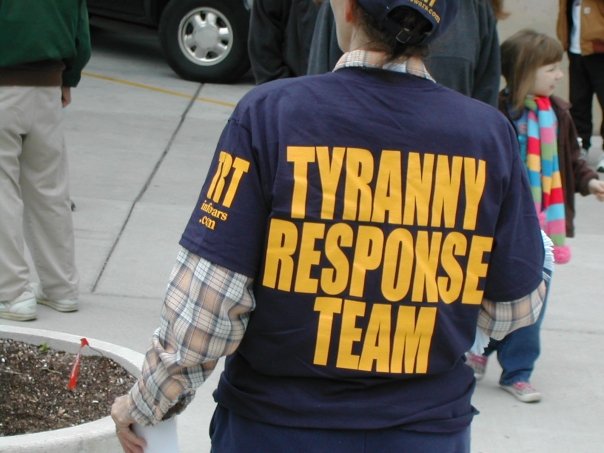U.S. Constitution
See other U.S. Constitution Articles
Title: The Missing 13th Amendment "TITLES OF NOBILITY" AND "HONOR"
Source:
[None]
URL Source: http://www.w3f.com/patriots/13/13th-01.html
Published: Aug 1, 1991
Author: David Dodge, Researcher Alfred Adask, Ed
Post Date: 2011-05-24 11:04:13 by A K A Stone
Keywords: None
Views: 4599
Comments: 5
ITLES OF NOBILITY" AND "HONOR" In the winter of 1983, archival research expert David Dodge, and former Baltimore police investigator Tom Dunn, were searching for evidence of government corruption in public records stored in the Belfast Library on the coast of Maine. By chance, they discovered the library's oldest authentic copy of the Constitution of the United States (printed in 1825). Both men were stunned to see this document included a 13th Amendment that no longer appears on current copies of the Constitution. Moreover, after studying the Amendment's language and historical context, they realized the principle intent of this "missing" 13th Amendment was to prohibit lawyers from serving in government. So began a seven year, nationwide search for the truth surrounding the most bizarre Constitutional puzzle in American history -- the unlawful removal of a ratified Amendment from the Constitution of the United States. Since 1983, Dodge and Dunn have uncovered additional copies of the Constitution with the "missing" 13th Amendment printed in at least eighteen separate publications by ten different states and territories over four decades from 1822 to 1860. In June of this year, Dodge uncovered the evidence that this missing 13th Amendment had indeed been lawfully ratified by the state of Virginia and was therefore an authentic Amendment to the American Constitution. If the evidence is correct and no logical errors have been made, a 13th Amendment restricting lawyers from serving in government was ratified in 1819 and removed from our Constitution during the tumult of the Civil War. Since the Amendment was never lawfully repealed, it is still the Law today. The implications are enormous. The story of this "missing" Amendment is complex and at times confusing because the political issues and vocabulary of the American Revolution were different from our own. However, there are essentially two issues: What does the Amendment mean? and, Was the Amendment ratified? Before we consider the issue of ratification, we should first understand the Amendment's meaning and consequent current relevance.
Post Comment Private Reply Ignore Thread
Top • Page Up • Full Thread • Page Down • Bottom/Latest
#1. To: All (#0)
[02] - MEANING of the 13th Amendment The "missing" 13th Amendment to the Constitution of the United States reads as follows: "If any citizen of the United States shall accept, claim, receive, or retain any title of nobility or honour, or shall without the consent of Congress, accept and retain any present, pension, office, or emolument of any kind whatever, from any emperor, king, prince, or foreign power, such person shall cease to be a citizen of the United States, and shall be incapable of holding any office of trust or profit under them, or either of them." [Emphasis added.} At the first reading, the meaning of this 13th Amendment (also called the "title of nobility" Amendment) seems obscure, unimportant. The references to "nobility", "honour", "emperor", "king", and "prince" lead us to dismiss this amendment as a petty post-revolution act of spite directed against the British monarchy. But in our modern world of Lady Di and Prince Charles, anti-royalist sentiments seem so archaic and quaint, that the Amendment can be ignored. Not so. Consider some evidence of its historical significance: First, "titles of nobility" were prohibited in both Article VI of the Articles of Confederation (1777) and in Article I, Sect. 9 of the Constitution of the United States (1778); Second, although already prohibited by the Constitution, an additional "title of nobility" amendment was proposed in 1789, again in 1810, and according to Dodge, finally ratified in 1819. Clearly, the founding fathers saw such a serious threat in "titles of nobility" and "honors" that anyone receiving them would forfeit their citizenship. Since the government prohibited "titles of nobility" several times over four decades, and went through the amending process (even though "titles of nobility" were already prohibited by the Constitution), it's obvious that the Amendment carried much more significance for our founding fathers than is readily apparent today.
http://www.quatloos.com/13th_amendement.htm 13th Amendment Scam How do you know that you are not so stupid that you will fall for darn near anything? A good test might be whether you fall for the 13th Amendment scam or not.
"Keep Your Goddamn Government Hands Off My Medicare!" - Various Tea Party signs.
hObama lost his US citizenship (if he ever had any) when he became a lawyer, and then again when he accepted the Nobel Peace Prize? Do we deport him to Kenya, or Denmark?
I recall a re-run of MASH I saw where this uber right winger named Colonel Flagg... Do you want me to go find you a book published back then with a scan of the amendment? Do you think I can do that?
Internet hoax debunked years ago, Stone. A minimal amount of cross checking would have alerted you to it. By the time VA "ratified" the 13th amendment, March of 1818, several more states had been admitted to the Union, thus raising the number of States required for its ratification from 13 to 16.
America...My Kind Of Place... "I truly am not that concerned about [bin Laden]..."
#2. To: A K A Stone (#1)
(Edited)
#3. To: A K A Stone (#1)
the founding fathers saw such a serious threat in "titles of nobility" and "honors" that anyone receiving them would forfeit their citizenship.

"We (government) need to do a lot less, a lot sooner" ~Ron Paul
Godwinson posted on 2011-02-23 11:47:32 ET
http://libertysflame.com/cgi-bin/readart.cgi?ArtNum=18011&Disp=46#C46
#4. To: Godwinson (#2)
#5. To: A K A Stone (#0)
(Edited)

--GW Bush
Top • Page Up • Full Thread • Page Down • Bottom/Latest
[Home] [Headlines] [Latest Articles] [Latest Comments] [Post] [Mail] [Sign-in] [Setup] [Help] [Register]
